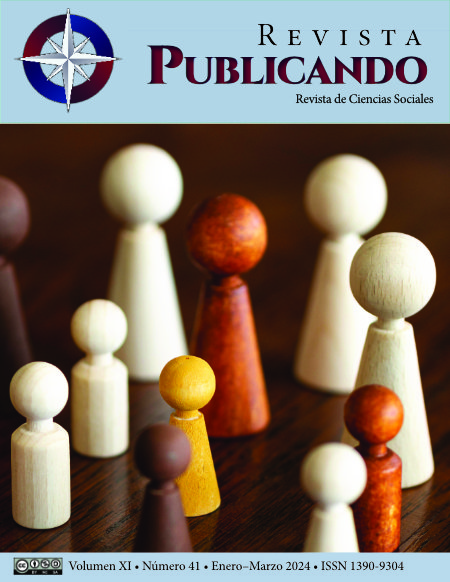Abstract
This research develops a baseline of the tourism available in Imbabura for the purpose of implementing actions that improve the current indicators. All the data collected come from private businesses registered in the land registry (census) compiled by the Ministry of Tourism in the province of Imbabura. A group of previously trained university students administered a questionnaire to managers and business owners. The subsectors under study were: accommodation, food and beverages, travel agencies or intermediation, and tourist transportation. By using this information, it is intended to diagnose the current situation in the province to strengthen it from an administrative, sustainable and marketing perspective, uniting academia, public and private sectors. The results show that the tourism industry in Imbabura requires effective marketing strategies and environment to enhance the sector and position the province as a brand. Tourism must be aligned with the Geopark initiative, a project that focuses on education, conservation, and geotourism.
References
Barlybaev, A. A., Akhmetov, V. Y., & Nasyrov, G. M. (2009). Tourism as a factor of rural economy diversification. Studies on Russian Economic Development, 20(6), 639–643. https://doi.org/10.1134/S1075700709060094
Butler, R. W. (1980). The Concept of a Tourist Area Cycle of Evolution - Implications for Management of Resources. Canadian Geographer, 24(1), 5–12.
Campora Espí, E. (2013). Estudio del impacto de las TIC en el turismo: análisis de su influencia en los habitantes de la ciudad de Gandía durante la planificación de un viaje.
Caro, M. (2008). Modelo explicativo del uso de las TIC en el sector hotelero de la península de Yucatán. Universidad Polítécnica de Madrid.
Cruz Torres, L. (2014). Algunas consideraciones sobre la utilización de herramientas digitales en la comercialización hotelera en el destino turístico de Varadero. Retos Turísticos, 2(1).
Del Barrio García, S., Moreno, L. L., & Jamilena, D. M. F. (2012). El Tipo De Incentivo Como Determinante En El Atractivo De La Promoción De Venta En Turismo Rural. Efecto Moderador Del Sexo, La Edad Y La Experiencia. Revista Española de Investigación En Marketing ESIC, 16(2), 103–126. https://doi.org/10.1016/S1138-1442(14)60016-4
Hart, M. (2015). Listo el proyecto de Geoparque para la provincia de Imbabura.
Hart Robertson, J. M. (2016). UNESCO Dossier for the Aspiring Geopark Project of Imbabura , Ecuador focusing on responsible participatory community tourism development based on singular geological identity and s ... November 2014. https://doi.org/10.13140/RG.2.1.3825.4320
Leal Paco, C. P. J. (2015). Assessing the impact of Invormation and Communication Technologies on the Portuguese hotel sector: an exploratory analisys with Data Envelopment Analysis.
Lotero, J., Ardila M., Gómez, A. (2008). Políticas públicas y turismo en las regiones rurales de Antioquia , Colombia : aproximaciones desde el enfoque de sistemas productivos territoriales. Cuadernos de Desarrollo Rural 5, 5(65), 169–193.
Meiriño, R., Fraiz Brea, J. A., Araújo Vila, N., & Rivo López, E. (2016). Segmentación del mercado de un destino turístico de interior. El caso de A Ribeira Sacra (Ourense). PASOS. Revista de Turismo y Patrimonio Cultural, 14(2), 369–383.
Muñoz A. (2017). Percepciones de la gestión del turismo en dos reservas de biosfera ecuatorianas: Galápagos y Sumaco. Investigaciones Geograficas, 93(93 investigaciones geográficas), 110–125. https://doi.org/10.14350/rig.47805
Muñoz, A. (2017). Segmentación del mercado de un destino turístico del interior: Galápagos y Sumaco. Investigaciones Geográficass, 93, 110–125.
Nyaupane, G. P. y S. P. (2011). Linkages among biodiversity, livelihood, and tourism. Annals of Tourism Research, 38(4), 1344–1366. https://doi.org/10.1016/j.annals.2011.03.006.
Santillán-Nuñez M, et al. (2015). Tecnologías de Información y Comun icaciones al servicio del turismo en Mazatlan.
Scholochow. (2010). ICT Effiency and Effectivenessin the Hotel Sector: A three-Stage.
Secretaría Nacional de Planificación y Desarrollo - Senplades. (2017). Plan Nacional de Desarrollo 2017 - 2021 - Toda una Vida. https://doi.org/10.1109/CDC.2014.7039974
Seric, G. S. (2011). Análisis de los hoteles de alta categoría en Croacia desde el enfoque Hotel Huésped.

This work is licensed under a Creative Commons Attribution-NonCommercial-ShareAlike 4.0 International License.
Copyright (c) 2024 Maribel Pinargote- Yepez, Guillermo Brucil, Xavier Dávalos-Gonzales, Vinicio Guerra




